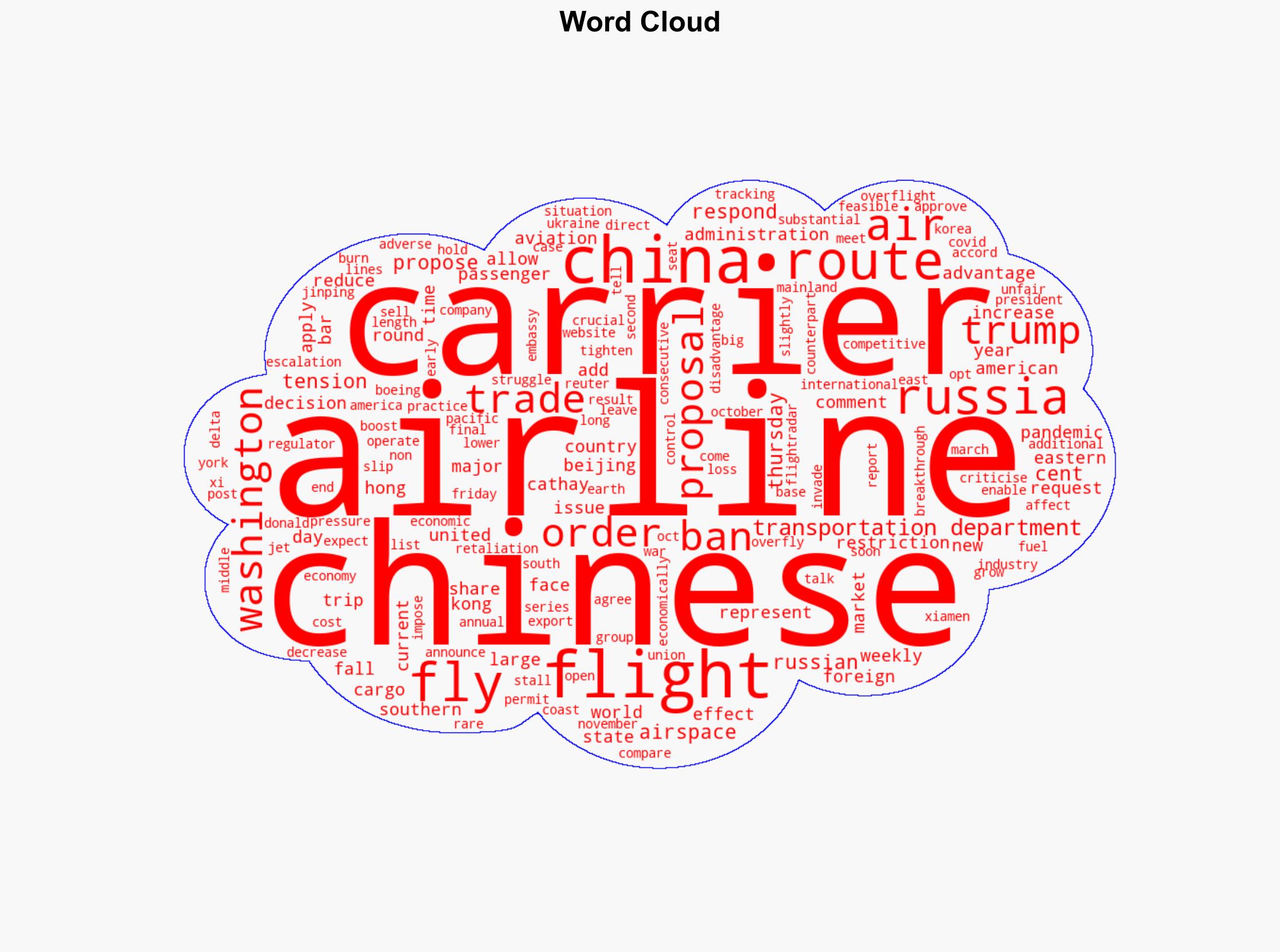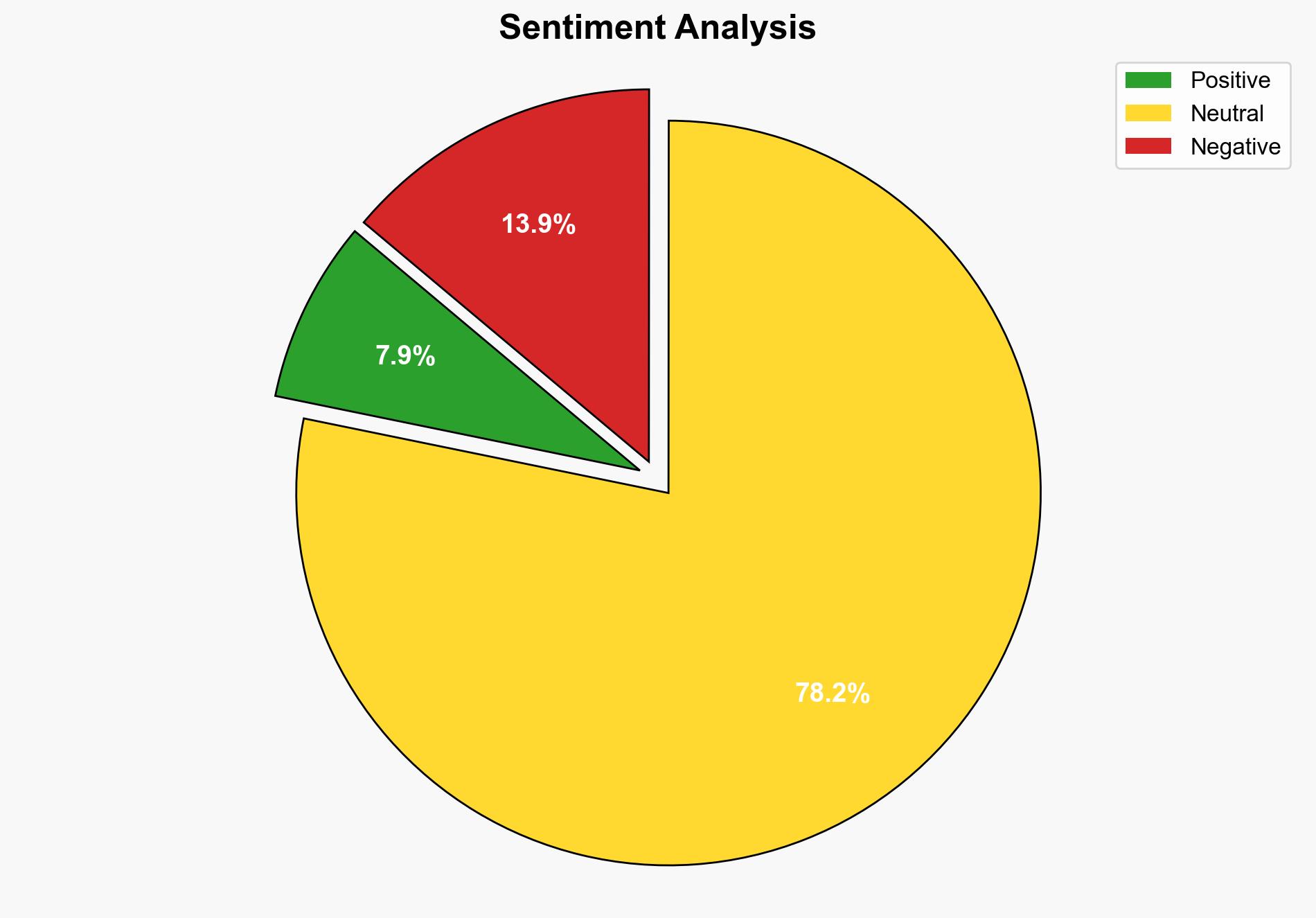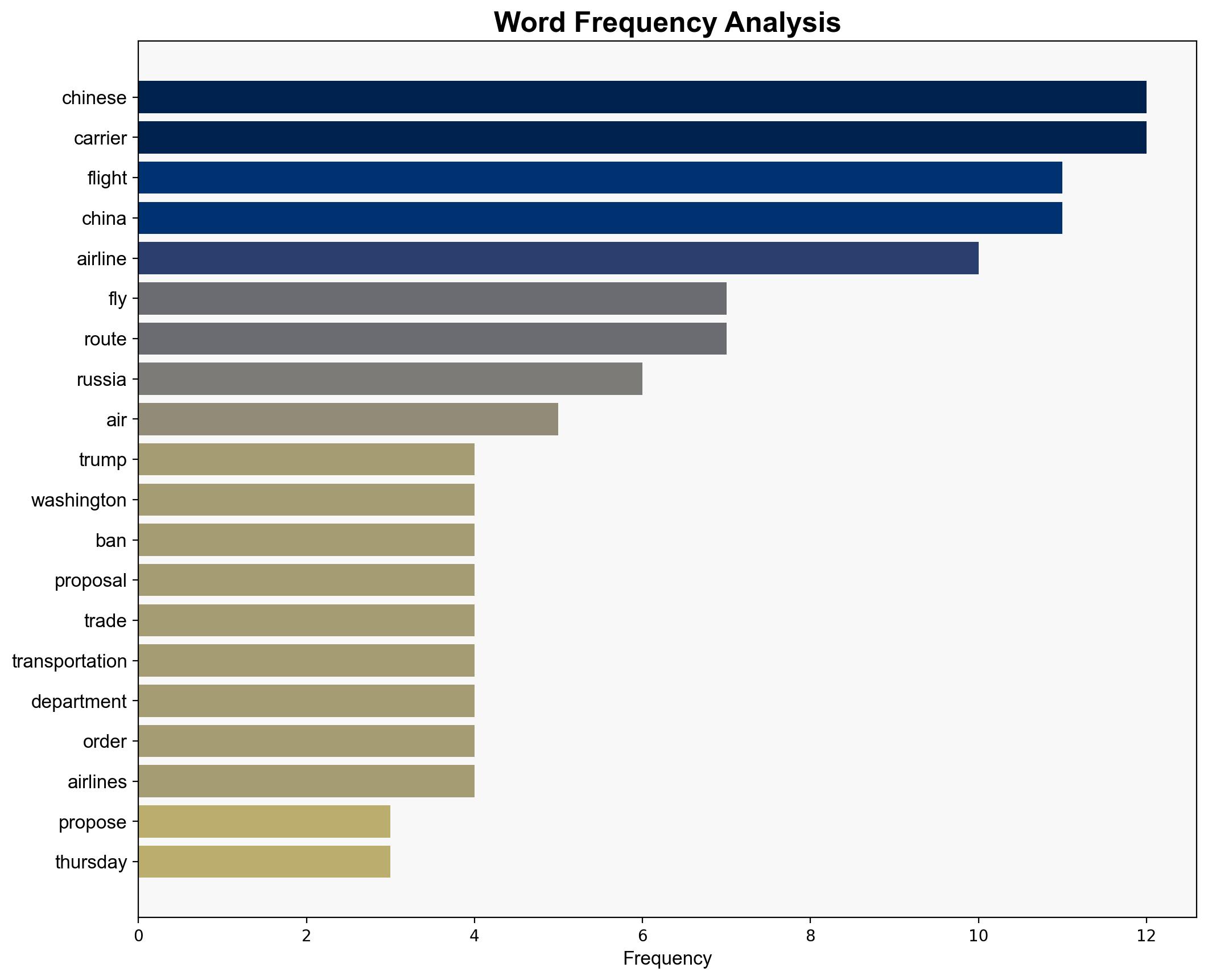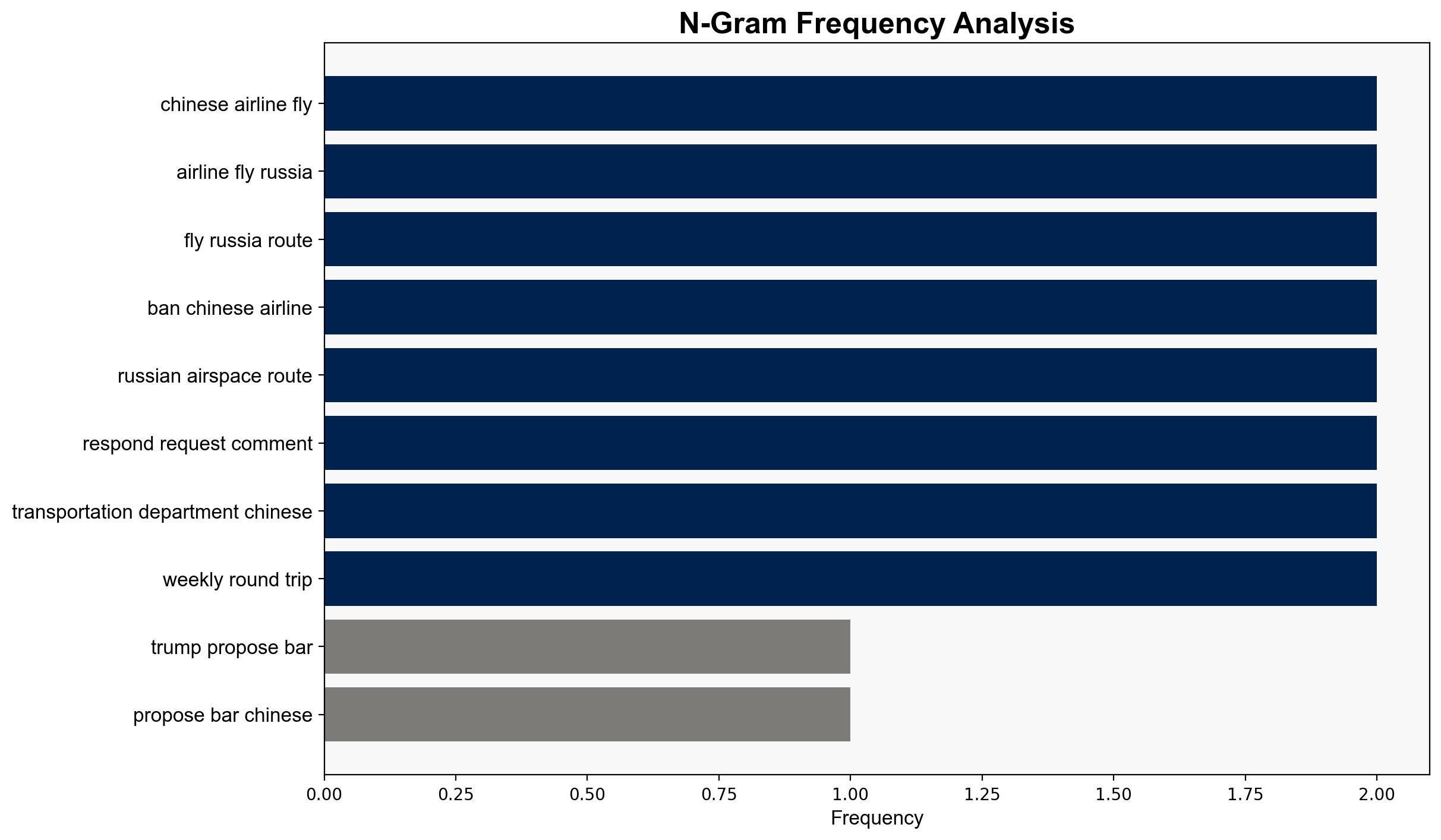Trump proposes barring Chinese airlines flying over Russia on US flights – CNA
Published on: 2025-10-10
Intelligence Report: Trump proposes barring Chinese airlines flying over Russia on US flights – CNA
1. BLUF (Bottom Line Up Front)
The proposal to bar Chinese airlines from flying over Russia on US-bound flights is likely a strategic maneuver to counter perceived competitive disadvantages faced by US carriers. This report evaluates two hypotheses using structured analytic techniques and concludes with a moderate confidence level that the primary motivation is economic, aimed at leveling the playing field for US airlines. Recommended action includes diplomatic engagement to manage potential escalation in trade tensions.
2. Competing Hypotheses
Hypothesis 1: The proposal is primarily an economic strategy to mitigate competitive disadvantages faced by US airlines due to Chinese carriers’ use of Russian airspace, which reduces flight time and costs.
Hypothesis 2: The proposal is a geopolitical strategy aimed at exerting pressure on China amidst broader trade tensions and as a response to China’s control over rare earth exports.
Using ACH 2.0, Hypothesis 1 is better supported by the evidence, as the proposal directly addresses competitive disadvantages and aligns with past criticisms from US airlines. Hypothesis 2 is less supported, as the proposal does not directly address trade issues beyond aviation.
3. Key Assumptions and Red Flags
Assumptions:
– The proposal will effectively level the competitive field for US airlines.
– China will perceive the proposal as primarily economic rather than geopolitical.
Red Flags:
– Lack of direct statements from Chinese officials on the proposal’s impact.
– Potential underestimation of China’s retaliatory capabilities in other economic sectors.
4. Implications and Strategic Risks
The proposal could escalate trade tensions, leading to retaliatory measures from China, potentially affecting other sectors like technology and agriculture. There is a risk of increased geopolitical friction, impacting global supply chains and economic stability. The move may also influence China’s aviation market dynamics, affecting international airline alliances and partnerships.
5. Recommendations and Outlook
- Engage in diplomatic discussions with China to clarify the proposal’s intent and mitigate potential retaliatory actions.
- Monitor Chinese responses in other economic sectors to anticipate and prepare for broader trade impacts.
- Scenario Projections:
- Best Case: China accepts the proposal without significant retaliation, leading to improved competitiveness for US airlines.
- Worst Case: Escalation of trade tensions with broad retaliatory measures affecting multiple sectors.
- Most Likely: Limited retaliatory measures from China, with ongoing negotiations to resolve aviation-specific issues.
6. Key Individuals and Entities
– Donald Trump
– Xi Jinping
– Air China, China Eastern, Xiamen Airlines, China Southern
– Cathay Pacific
7. Thematic Tags
national security threats, economic strategy, aviation industry, US-China relations





